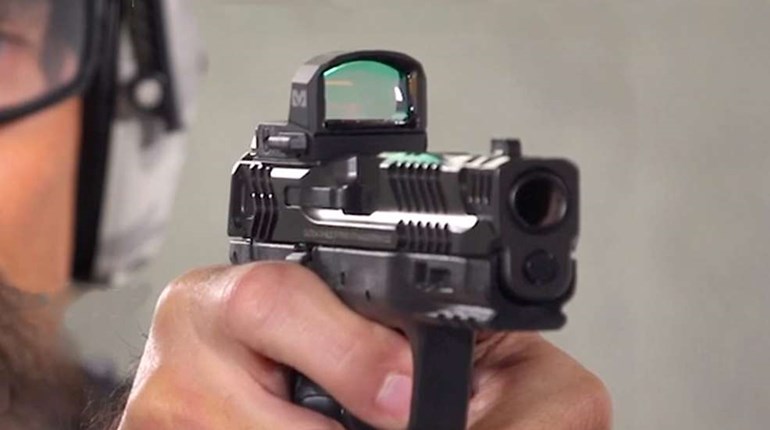
When you are faced with a life-threatening attack, it doesn't matter that you are carrying the latest and greatest defensive handgun on the market. What matters is your ability to perform with whatever handgun you have chosen to carry. In that regard, Col. Jeff Cooper admonished his students to “live with their handgun.” What follows is my recipe for learning to live with the defensive handgun of your choice.
1. Learn to draw and reholster your handgun while using only one hand and never looking at the holster. I know you have seen videos of competitive shooters looking down at their holster while waiting for the buzzer to sound and then looking down again while they reholster. That is fine, because hopefully no one is trying to kill them during the match. However, the defensive shooter must be focused on the threat, and he cannot afford to be looking down at his holster. The same is true when we reholster the handgun, even though we would only reholster when there is no longer a threat. This is not a time to be wrong. Even though the fight seems to be over, we need to be scanning the area in order to be absolutely sure.
2. Learn to perform a tactical reload and a speed reload without looking at the handgun. Again, your focus should be on the threat and your surroundings. A real aid to successful and fast reloading is to hold the pistol high enough so that you see it in the bottom of your peripheral vision. The worst technique is to perform the reload by holding the pistol so low, your neck is bent and your face is pointed down during the procedure, because you lose almost all information about what is going on around you.
3. Learn the malfunctions that are common to the type of handgun that you carry and practice clearing them. Keep in mind that double-action revolvers can malfunction, too, and know how to clear them if that is your choice of defensive firearm. Under the best of circumstances, clearing a malfunction is a time-consuming thing; however, with practice, you can learn to keep this down time to a minimum and stay in the fight.
4. Learn to fieldstrip your pistol and practice until you can do it without looking at the pistol. While fieldstripping a pistol is not something we would do in the middle of a fight, it builds a familiarity with the handgun and helps it to become a true part of your defensive plan.
5. Make dry-fire practice a regular part of your training and practice regimen. Nothing helps make the defensive handgun a part of you like dry-fire practice. Working on presentation skills and reloading skills creates smooth, confident handling of the defensive handgun that will help give you a quick response to a criminal attack. Needless to say, please make doubly sure your handgun is unloaded before and during all dry practice.
It is important that the manipulation of the defensive handgun become second nature to you because, during a fight, your entire attention should be focused on the threat and your plan for dealing with it. A friend of mine once nearly stepped on a rattlesnake. He told me, “When I realized that it was a dangerous snake, my pistol was in my hand. I have no recollection of drawing it.” That, my friends, is a man who had learned to live with his handgun.



































